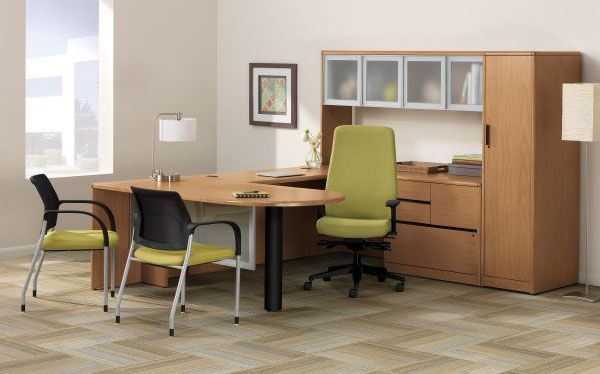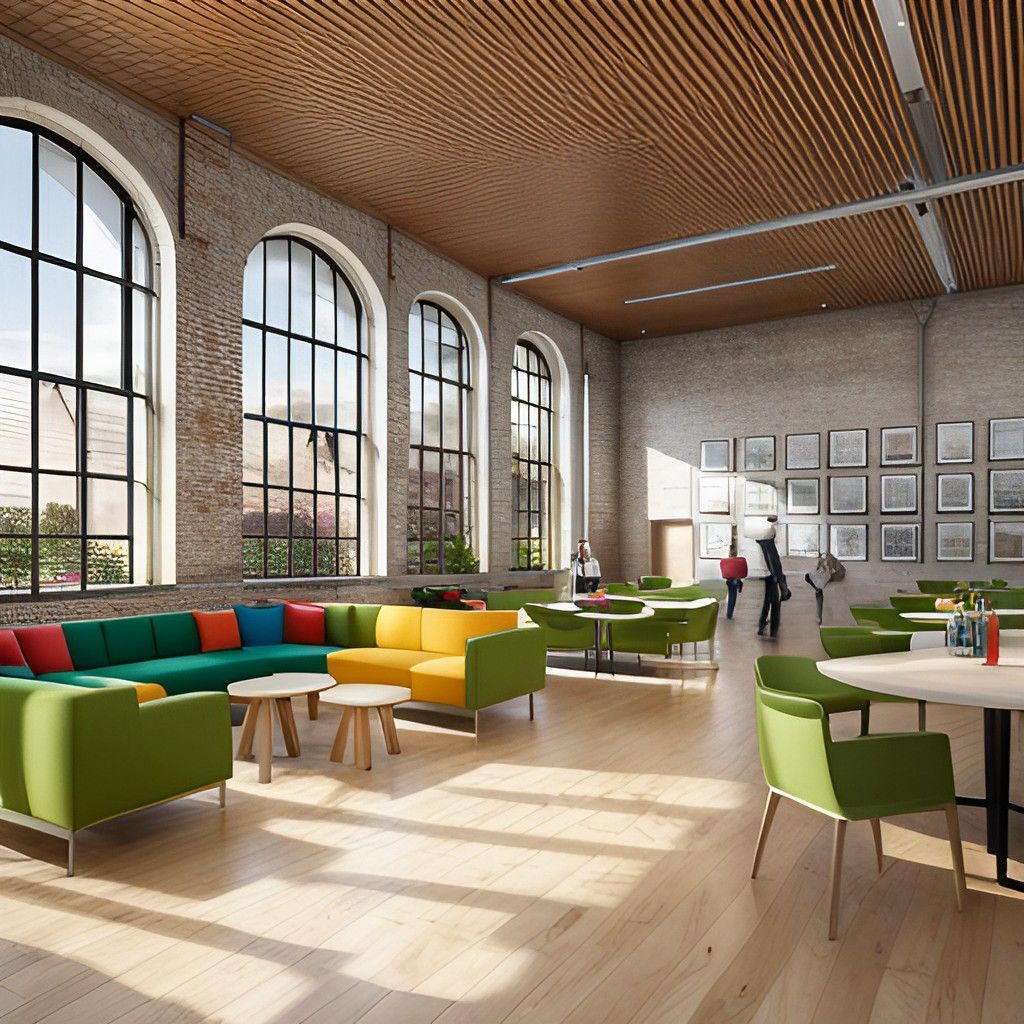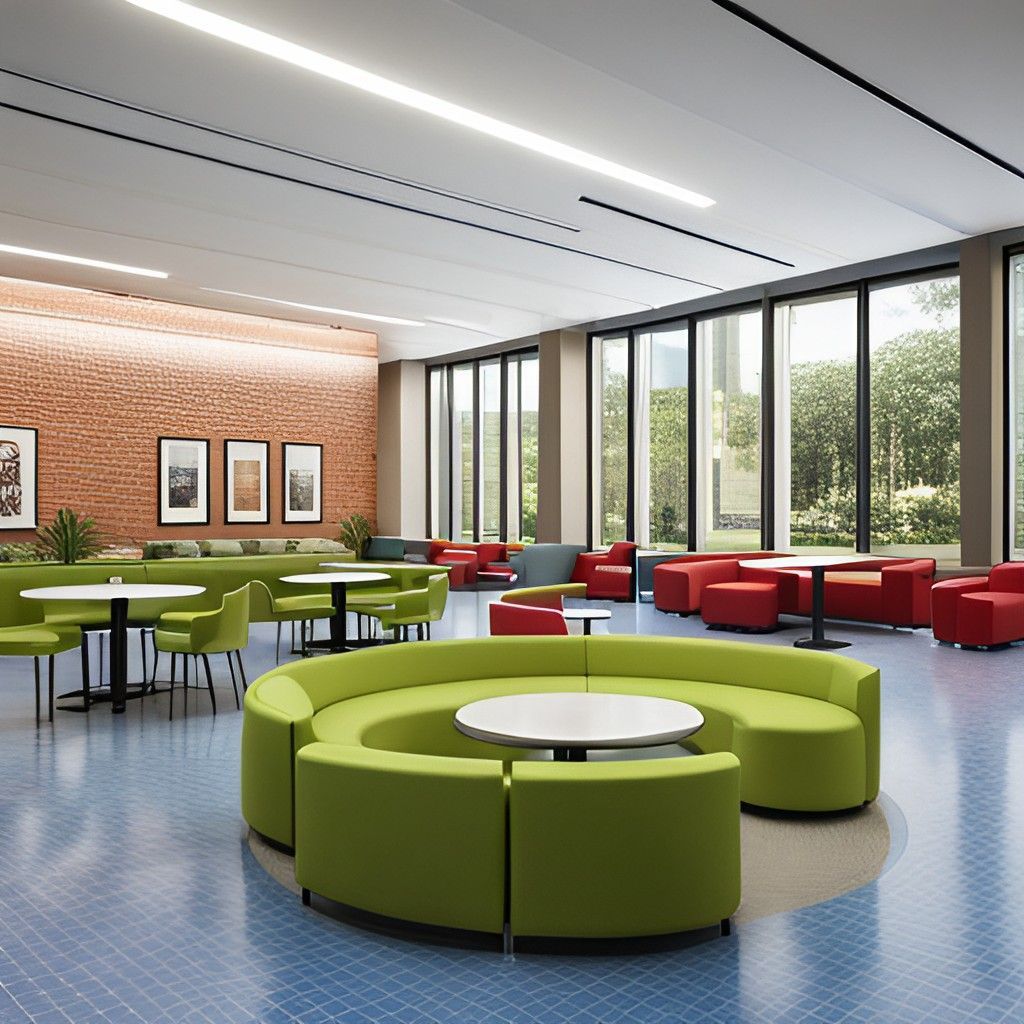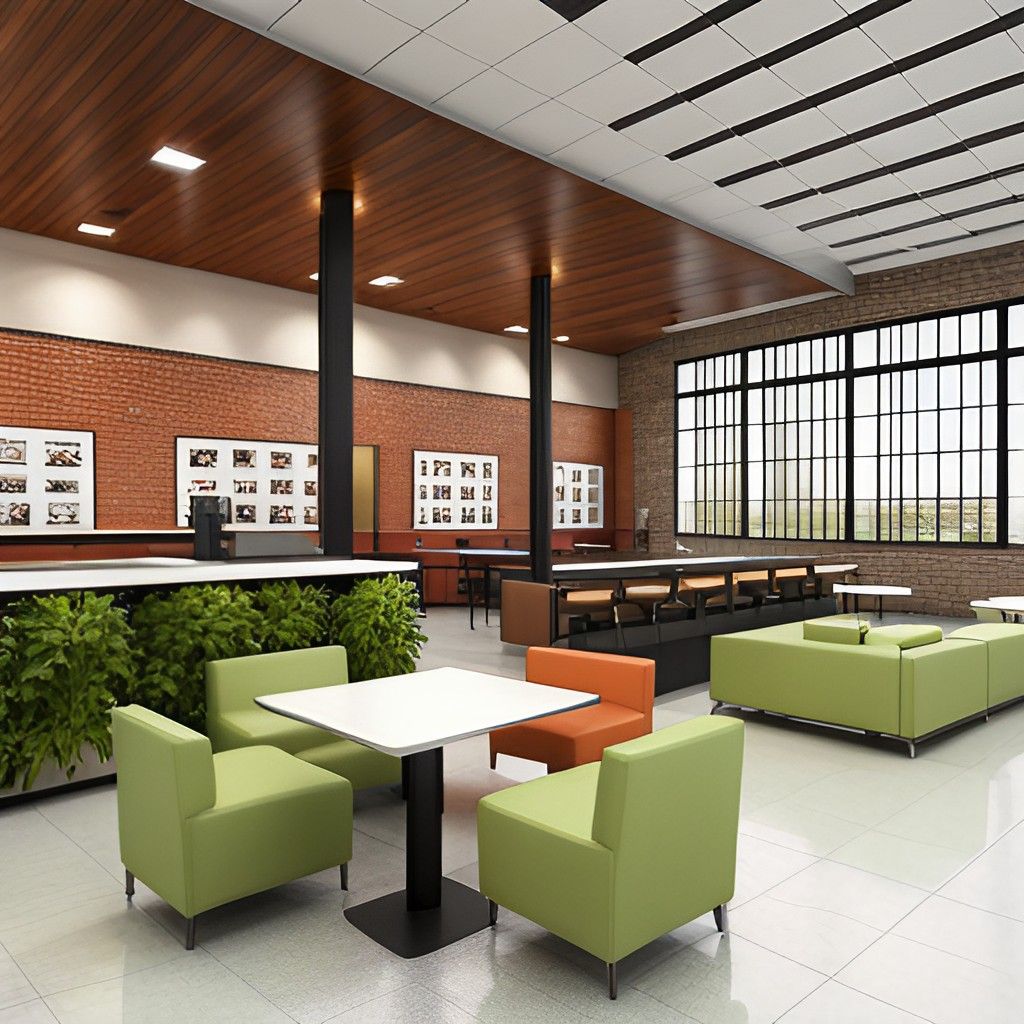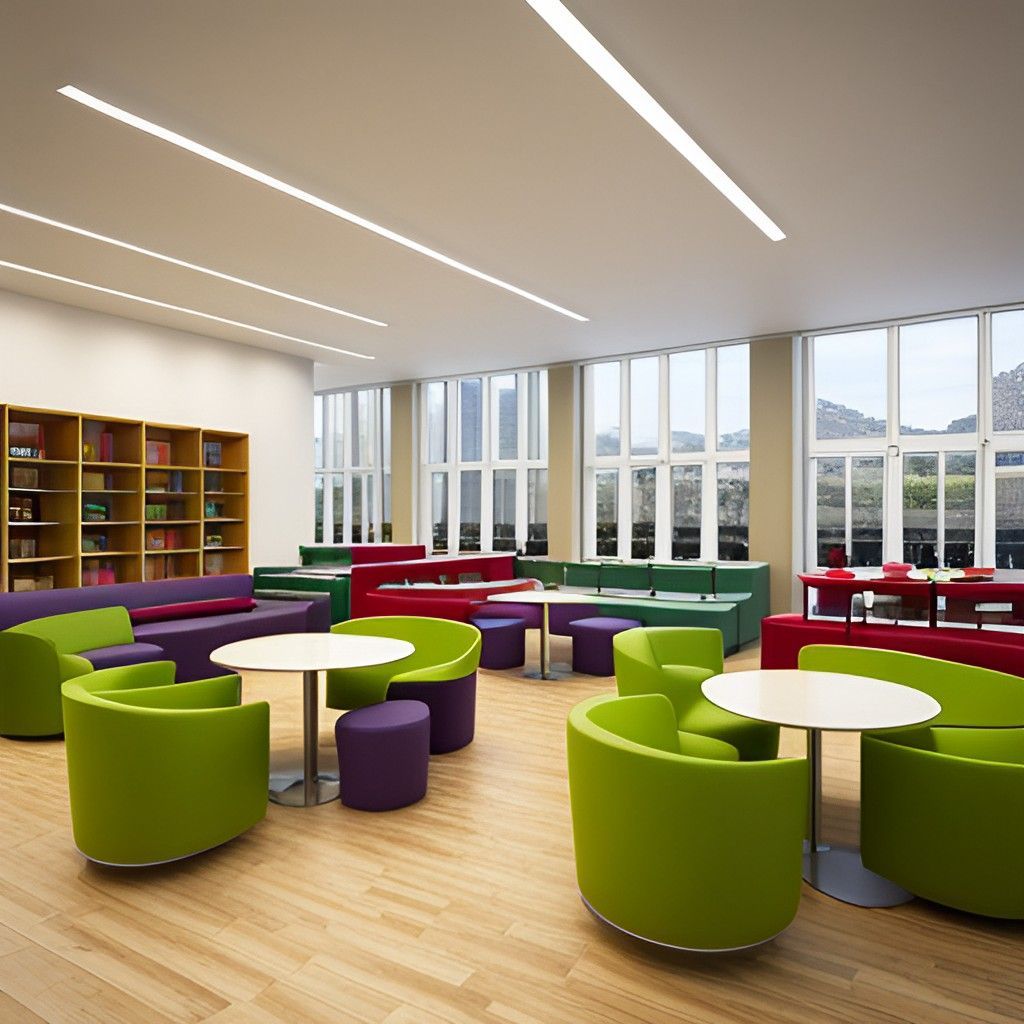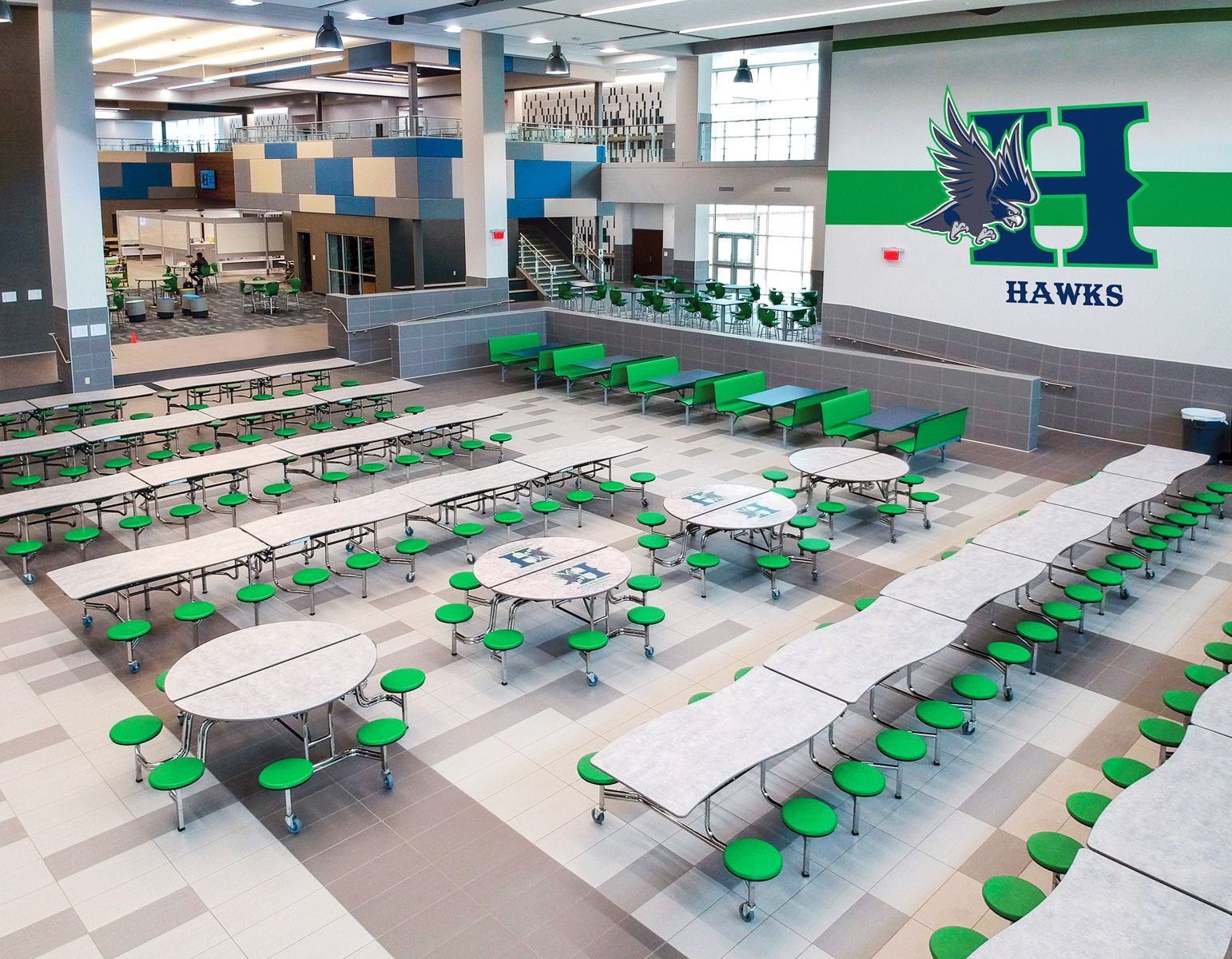INSPIRING TRENDS - Transforming outdated commons and libraries
Out with the uninspiring, boxy classrooms and mundane common areas that scream outdated education.
Architects and designers are on a mission to revolutionize traditional spaces, transforming them into vibrant, collaborative hubs that embody the dynamic nature of modern learning. Enter 2024, where two groundbreaking concepts steal the spotlight: the captivating Learning Commons and the mesmerizing Library Commons. These innovative spaces, though unique, share a powerful goal – to redefine the educational experience, nurture collaboration, and ignite inspiration among the future generation of students.
1. Learning Commons: Where Innovation Meets Collaboration
The Learning Commons is more than a space; it's a dynamic environment where students seamlessly transition between classes and before and after-school activities. It goes beyond a mere hangout spot, offering a natural setting that cultivates collaboration and personal study.
"Flexible learning spaces, like those in Learning Commons, have shown a 32% increase in student engagement." - National Center for Education Statistics
Design Specifics and Inspiration
Designed with planned learning zones, the Learning Commons accommodates various activities without hampering each other. From collaboration zones for group discussions to social learning zones encouraging student interaction and individual study zones for quieter activities, it's a holistic approach that maximizes a building's footprint.
Picture a vibrant coffee shop or tech store where students feel relaxed yet energized. That's the atmosphere educators aim to create – one that fosters camaraderie, collaboration, and energized learning. Success lies in flexible, mobile furniture configurations and power stations, turning any spare space into a modern learning commons primed for future use.
"In the fluid landscape of education, Learning Commons is the heartbeat that synchronizes students, ideas, and progress." - Unknown
2. Library Commons: Elevating the Academic Experience
While Learning Commons and Library Commons share similarities, the latter typically takes residence in the space once dominated by the traditional library. It entices students to research, collaborate, and interact, providing tools for turning knowledge into tangible projects.
Like its counterpart, the Library Commons boasts collaborative, social, and individual zones but adds a media and graphics production area. This addition aligns with the needs of modern projects, papers, and presentations, creating an experience akin to today's dynamic workplaces.
"Libraries embracing the Library Commons model have witnessed a 25% increase in student participation in research-based projects." - American Library Association.
The Library Commons is a hub of creativity, technology, and student engagement that helps learners explore the world of knowledge. By inspiring students to collaborate with others, it also creates opportunities for networking and broadening
Design Specifics and Inspiration
Library Commons breaks away from old library norms, embracing an environment that encourages collaboration, discussion, and even allows food and drink. The best designs strike a balance between the laid-back feel of a coffee shop and the dynamic collaboration spaces found in contemporary architectural and design firms.
In the ever-evolving landscape of education, these trends are not just reshaping physical spaces; they are reshaping the very essence of learning itself. As we witness the rise of Learning and Library Commons, we are stepping into a future where education is not confined to four walls but unleashed in dynamic, inspiring environments. These are not just trends; they are the building blocks of a new era in education, where innovation, collaboration, and inspiration reign supreme. Get ready to witness the commonplace become extraordinary.
